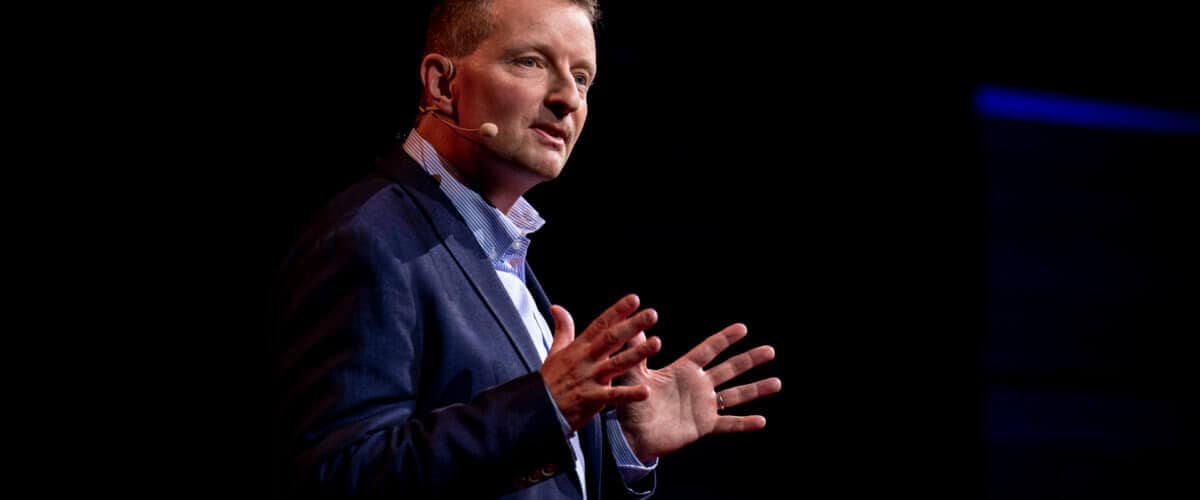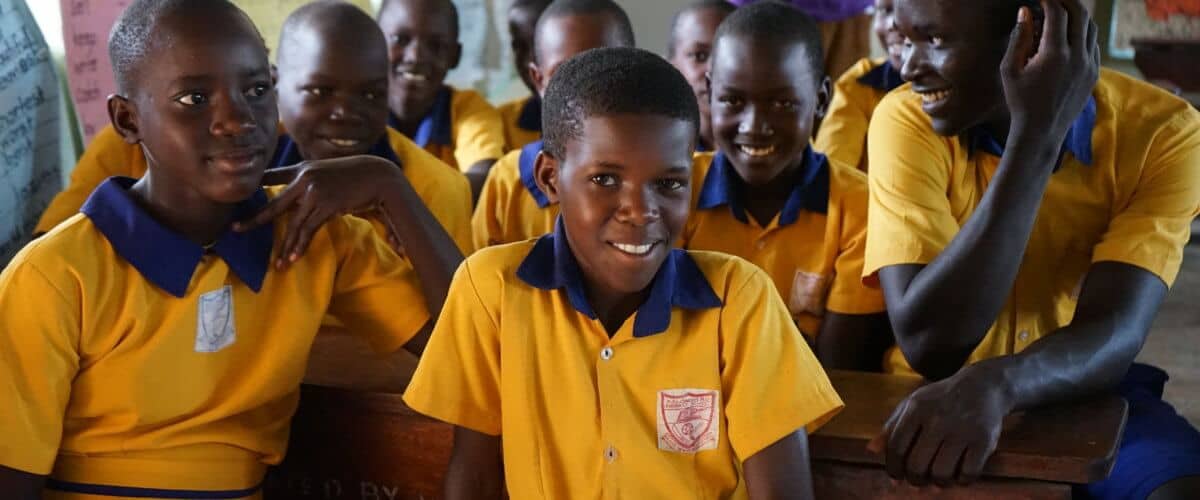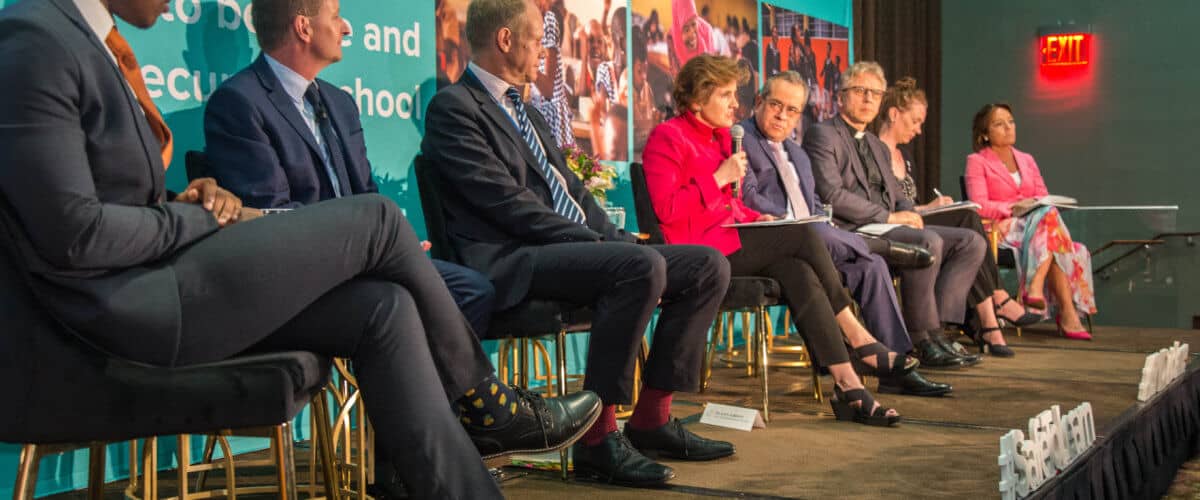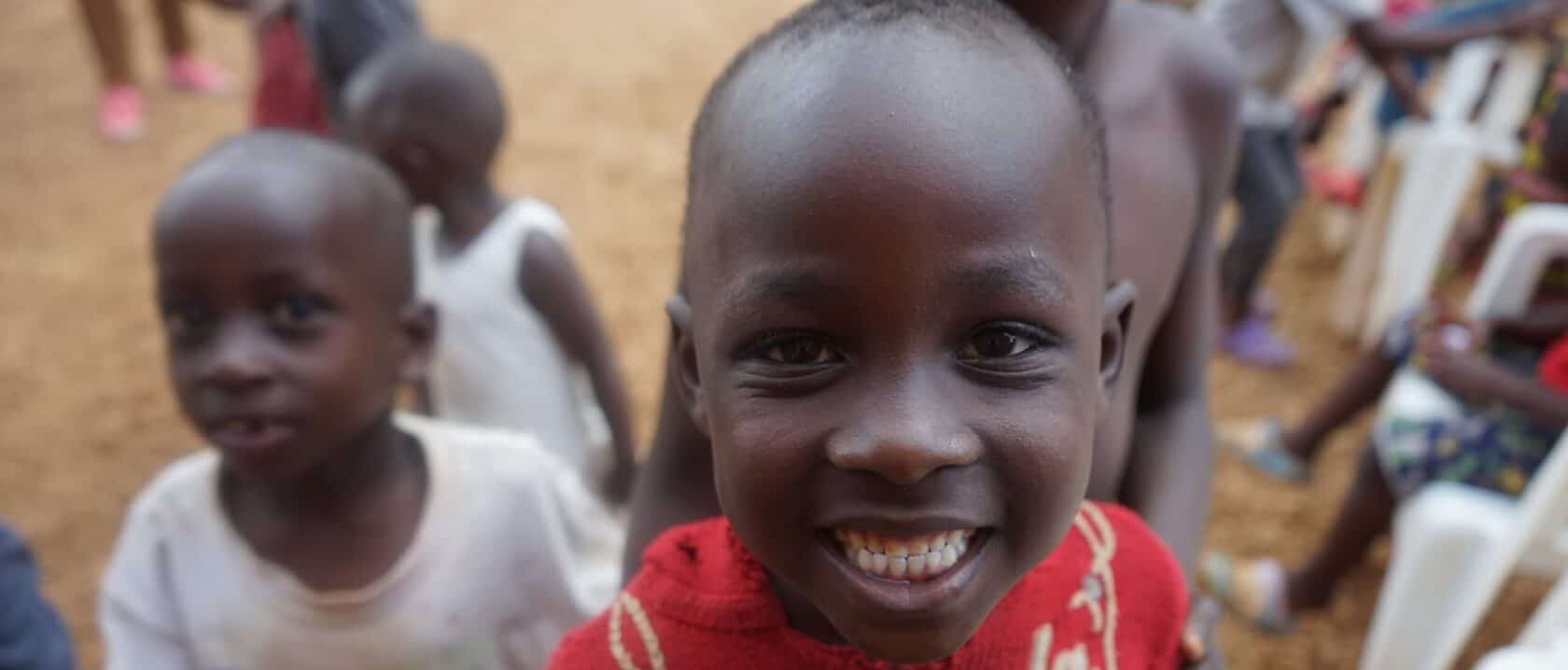To mark World Day Against Child Labour, we speak to Dr Howard Taylor about how we can all work together to eradicate child labour globally.
June 12 is firmly in the calendar for marking the World Day Against Child Labour.
It’s an opportunity to highlight the disturbing global extent of child labour and the actions needed to eliminate it.
Child labour can cause extreme physical and mental harm, and even death. It is closely related to modern day slavery and sexual exploitation.
To coincide with the World Day Against Child Labour, a new report containing global estimates has been released. For the first time in two decades, the number of children being put to work has risen – to 160 million worldwide, representing an increase of 8.4 million over four years – while millions of other are at risk due to the COVID-19 pandemic.
The world’s governments have set a target to end all violence against children by 2030, as part of the Sustainable Development Goals , in order to build a world where all children grow up free from violence, exploitation and abuse.
The Global Partnership to End Violence Against Children is one of the key organisations working and supporting the efforts of those seeking to prevent violence, protect childhood, and help make societies safe for children. It is the only global entity focused solely on ending all forms of violence against children by 2030.
Marking this day, Youth Time interviews Dr. Howard Taylor, Executive Director of End Violence Partnership, to elaborate more on their significant contribution to end child labour and violence against children.

The End Violence Partnership is a platform for collective, evidence-based advocacy and action.
Working with a unique coalition of over 600 organisations, it connects partners to raise awareness, catalyse leadership commitments, mobilise new resources, promote evidence-based solutions, and support those working to end all forms of violence, abuse and neglect of children.
Let’s hear more from this organisation which is increasingly contributing to global policy discussions on child safety – at home, at school, online and with their communities.
The Causes and Effects of Child Labour
Initially speaking about the importance of this day, Dr Taylor mentions the significant rise of children working between the ages of 5 and 11, which accounts for just over half of the total global figure.
“And those between 5 and 17 working in hazardous conditions, for example working underground in mines or sewing clothes in factories for 12 hours a day, has risen by 6.5 million since 2016, to 79 million.”
“Nearly half of those children work in hazardous conditions, for example working underground in mines or sewing clothes in factories for 12 hours a day, and it is estimated that 4.3 million are forced to work, including as child soldiers or within the commercial sex trade.
“No matter what form child labour takes – but especially when children are pulled out of school to work or forced to work in dangerous situations – it is an explicit violation of both child protection and child rights,” he asserts.
“It’s an issue that is being aggravated even more because of COVID-19, as the pandemic has sent economic shockwaves throughout the world which can mean that children drop out of school and are forced to work to help feed their families.”
Further, he speaks about what causes child labour.
“It is most often a result of poverty, but unfortunately, the longstanding impacts of child labour can mean a child – and their family – will be trapped in poverty for years to come.

“Child labour interferes with children’s education by depriving them of the opportunity to attend school, forcing them to drop out prematurely, or requiring them to split their time between school and excessively long, hard work,” he explains.
Child labour, he goes on, can also have mental and physical health effects.
“Whether that be through burning their skin on chemicals, breathing in pesticides drifting off crops, or suffering mental, emotional or physical abuse as domestic servants.
“It’s a situation that is entirely unacceptable, and something that we – as a global community – are working to change.”
Three Ways We Can Help
Dr Taylor believes the World Day Against Child Labour plays an important role in increasing awareness.
“Children’s involvement in child labour and hazardous work is declining: in 2000, there were over 245 million children engaged in child labour, and by 2016, that number had been nearly cut in half.
“Still, every child engaged in exploitative and hazardous labour is one too many, and we need to continue working together to end this practice in every community.”
We all have a role to play. Taylor shares with us three ways we can help.
- Empower children, amplify their voices and create platforms and opportunities to increase their engagement in the decisions that affect their lives.
- Emphasize the importance of education amongst parents and children, not just to learn, but as a means to more productive, more lucrative work–when the time is right.
- Ensure that governments and companies have the laws and investments in place to prevent and respond to child labour, along with the proper mechanisms to detect child labour when it occurs.
Together to #ENDviolence
Together to #ENDviolence is a global campaign and Solutions Summit Series to catalyse the political and financial commitments needed to end violence against children for good.
“In less than six months, partners have hosted nearly 40 events around the world drawing awareness to violence against children and calling for commitments to prevent it.
“Experts have also gathered, as part of the campaign, to develop six game-changing actions to prevent violence against children; this set of policy calls will soon be released to urge action and demand change,” Taylor adds.
Watch this inspiring introductory video, and this video that highlights the voices of children, both of which were featured during the launch event of Together to #ENDviolence.
Protecting Children Everywhere
Today, Taylor elaborates, the End Violence Partnership is focused on promoting and supporting work to protect children where they live their lives: at home, in their communities, at school and online.
“Without continued and urgent action, recent progress could be overshadowed by the ongoing COVID-19 pandemic, which is estimated to place 85 million more children at risk of violence, exploitation and abuse – along with an additional 13 million child marriages in the years immediately following the pandemic.”
Considering this reality, the End Violence Partnership went into overdrive when COVID-19 was declared a global pandemic, encouraging a unified global response and bringing heightened awareness to the increased violence facing children.
To mitigate challenges, the Partnership focuses on key priority areas to protect children where they live their lives: at home, in their communities, at school and online.
They have also launched Together to #ENDviolence to ensure the world builds back better–and more safely – for children both during and after COVID-19.
More detail on each of these priorities is below.
At Home
In September 2020, the Global Initiative to End All Corporal Punishment of Children became part of the End Violence Partnership.
For decades, the Global Initiative worked to end corporal punishment by advocating for comprehensive law reform across the world.
Today, the End Violence Partnership is enabling the Initiative’s essential work to continue under the new name End Corporal Punishment. Learn more here.
In Communities
End Violence promotes the concept of Pathfinding to fully mobilize governments and civil society to combat violence against children, informed by global best practice (the INSPIRE strategies) and contextual local data.
Once a country becomes a Pathfinder, they make a public commitment to do more to end violence against children – and embark on a nationally driven process to develop a comprehensive, multi-sectoral plan to do so.
As of May 2021, the End Violence Partnership has supported 33 countries to become pathfinders. Learn more here.
At School
In every country around the world, children are experiencing violence in schools. That violence comes in many forms, from corporal punishment to attacks to bullying to sex for grades.
Safe to Learn is a five-year initiative that aims to change that.

Our shared vision is to work with governments, civil society organisations, communities, teachers and children themselves to end the violence that undermines education and make sure every child – especially the most marginalized – is Safe to Learn. Learn more here.
Online
Since 2016, End Violence Fund has invested $44 million in 53 projects focused on preventing and eliminating online child sexual exploitation and abuse.
It equips practitioners and mobilises resources by supporting our partners’ projects on the ground.
As a result, it has supported partners to rescue victims of child sexual exploitation and abuse; create reporting hotlines, helplines and support services for children experiencing violence; and boost law enforcement’s ability to handle and prosecute cases of online sexual exploitation, among much more. Learn more here.
You can also view this video to learn more about the risks facing children online.
Conclusively, Taylor shares with us a few fast facts on the state of violence against children:
- Every year, at least one billion children experience violence–that’s half of the world’s children.
- Every seven minutes, an adolescent dies because of violence.
- Children with disabilities are almost four times more likely to experience violence than non-disabled children.
- Three out of four young children are regularly subjected to violent discipline by their caregivers.
- One in every four children is living in a country affected by conflict or disaster.
- Worldwide, close to 130 million (over one in three) students from age 13-15 experience bullying.
Want to read more from Gresë Sermaxhaj? How about this inspirational article?
Support us!
All your donations will be used to pay the magazine’s journalists and to support the ongoing costs of maintaining the site.
Share this post
Interested in co-operating with us?
We are open to co-operation from writers and businesses alike. You can reach us on our email at [email protected]/[email protected] and we will get back to you as quick as we can.










